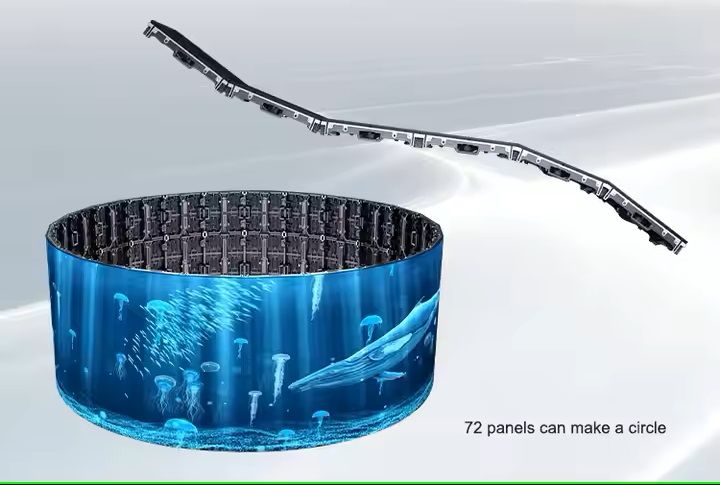There are many precautions to be taken when using LED screens, and different situations and usage projects have different requirements. What are the things we need to pay attention to when using LED stage screens in TV and film projects? LED screens are increasingly being used in television studios and large-scale events broadcasted on television. However, there are significant differences in the visual effects of LED screens during use, with some displaying bright, clear, and stable colors from start to finish; Some scenes are underestimated and unclear when viewed from a distant perspective.
This requires us to pay attention to the following aspects in the selection and use of LED stage screens:
1. The shooting distance should be appropriate. As mentioned earlier regarding the spacing and filling coefficient, LED screens with different point spacing and filling coefficients have different suitable shooting distances. Taking an LED display screen with a dot pitch of 4.25 millimeters and a fill factor of 60% as an example, a distance of 4-10 meters between the subject and the screen is more appropriate, which can result in excellent background images when shooting people. If the person is too close to the screen, the background will appear grainy and prone to mesh interference when shooting close-up shots.
2. The dot spacing should be as small as possible. The dot spacing is the distance between the center points of adjacent pixels on the LED screen. The smaller the distance between points, the more pixels per unit area, the higher the resolution, and the closer the shooting distance, but of course, the more expensive the price. At present, the dot pitch of LED screens used in domestic TV studios is mostly 6-8 millimeters. It is necessary to carefully study the relationship between the resolution of the signal source and the dot pitch, strive to achieve consistent resolution, and achieve point-to-point display to achieve the best effect.
3. Color temperature can be adjusted. When using LED screens as backgrounds in the studio, their color temperature should be consistent with the color temperature of the indoor lighting in order to achieve accurate color reproduction during shooting. The lighting in the studio is adjusted according to the requirements of the program, sometimes using 3200K low color temperature lamps and sometimes using 5600K high color temperature lamps. The LED stage screen needs to be adjusted to the corresponding color temperature in order to achieve satisfactory shooting results.
4. Ensure a good working environment. The lifespan and stability of LED screens are closely related to the operating temperature. If the actual working temperature exceeds the specified usage range of the product, not only will its lifespan be shortened, but the product itself will also be severely damaged. In addition, the threat of dust cannot be ignored. Too much dust can reduce the thermal stability of LED screens and even cause leakage, which can lead to burning in severe cases; Dust can also absorb moisture, which can corrode electronic circuits and cause some difficult to troubleshoot short circuits, so it is important to keep the studio clean.
When using LED screens in TV programs, we need to choose suitable LED screens, deeply understand their characteristics, and select technical products as backgrounds based on different studio conditions, program formats, and requirements, so as to maximize the advantages of these new technologies.
